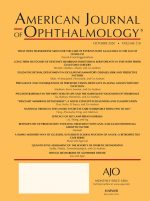In this perspective article for the American Journal of Ophthalmology, Dr. Lee and Dr. Apte summarize the current understanding of retinal changes associated with Alzheimer's disease that have been identified thanks to recent advances in imaging technology. Some of these imaging findings correlate with known pathologic findings, and some are associated with cognitive decline. The authors discuss the current understanding of how these retinal changes may be related to neurodegeneration or other AD-related brain pathology on a cellular level.
The eye offers a unique window into the brain, as the neurons in the eye are a direct extension of the central nervous system and share the same embryonic development. Researchers have known for decades that optic nerve degeneration, the loss of retinal ganglion cells, and thinning of the retinal nerve fiber layer are associated with Alzheimer's disease based on pathological examination of post-mortem eyes, but recent developments in imaging technologies such as optical coherence tomography (OCT) allow physicians to easily assess these changes during a regular eye exam. New imaging techniques have also led to the discovery of new retinal biomarkers.
In addition to changes in the nerve fiber layer that are visible in OCT imaging, researchers have also discovered alterations in retinal blood vessels using optical coherence tomography angiography. A technique called hyperspectral imaging has been used to detect amyloid-beta aggregates in the retina that are similar to those found in AD pathology. Many of the studies investigating the association between retinal imaging pathology and Alzheimer's disease have been small and have used a variety of different methods to assess cognition, making it difficult to compare and assess results.
As the evidence increases to support the connection between these retinal changes and Alzheimer's disease, the authors note that larger and more rigorously defined studies are needed in order to determine which retinal features are highly sensitive and specific for Alzheimer's disease, which can be challenging in older patients who are more likely to have age-related eye diseases. In addition, more data will be needed to take advantage of recent advances in computing vision and artificial intelligence.
This exciting area of research will continue to accelerate as researcher collaborate across different disciplines and will likely lead to the discovery of additional ophthalmic biomarkers of Alzheimer's disease as well as other neurodegenerative diseases.
Lee CS, Apte RS. Retinal Biomarkers of Alzheimer’s Disease. Am J Ophthalmol. Volume 218, October 2020, Pages 337- 341. doi.org/10.1016/j.ajo.2020.04.040

